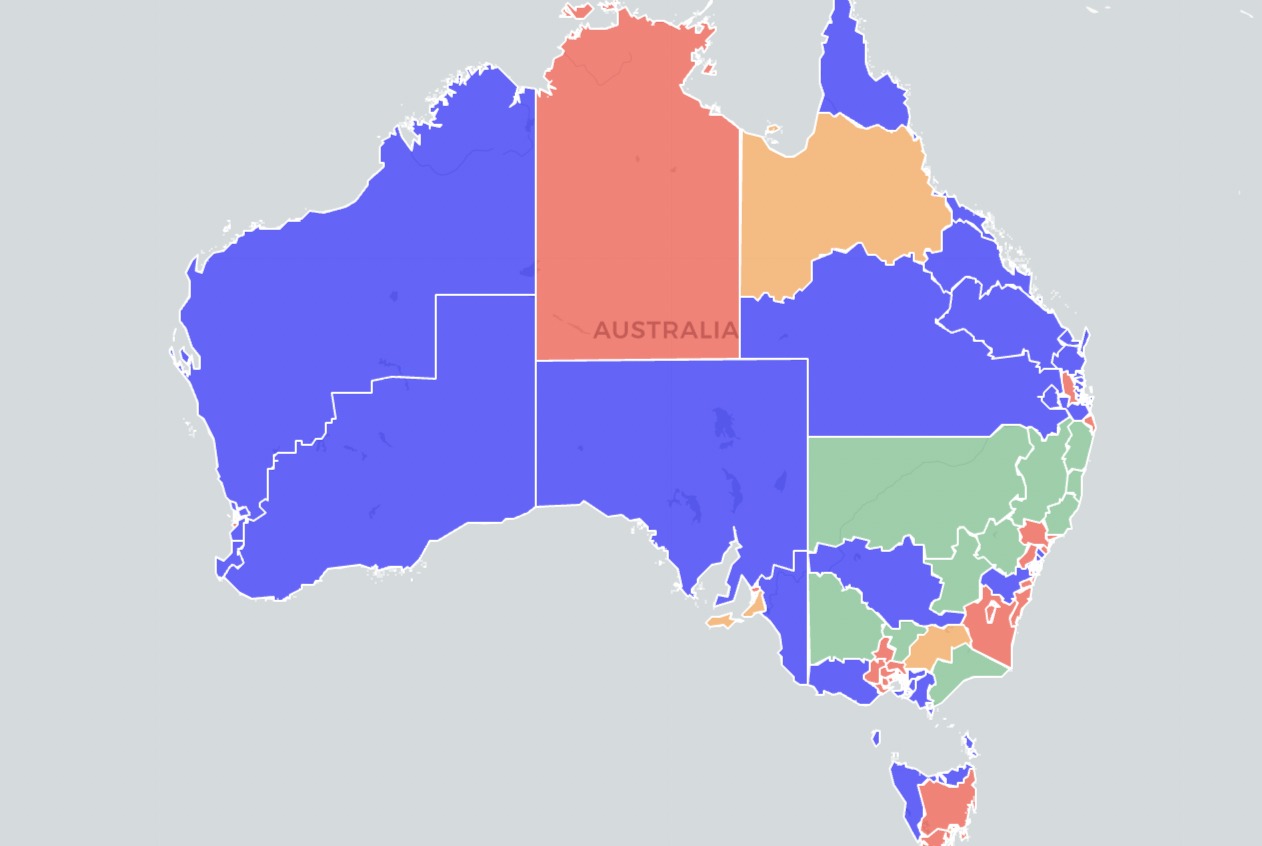Ben is joined this week by Jill Sheppard and Peter Brent to discuss the state of the campaign, long term voting trends and the seat of Dickson in Queensland.
This podcast is supported by the Tally Room’s supporters on Patreon. If you find this podcast worthwhile please consider giving your support.
You can subscribe to this podcast using this RSS feed in your podcast app of choice, but should also be able to find this podcast by searching for “the Tally Room”. If you like the show please considering rating and reviewing us on iTunes.




Perhaps institutional path dependency will retain the ALP/Coalition binary organisational framework long-term, despite their shifting core constituencies. But not necessarily.
With both sides experiencing long term steady erosion of their rusted on support bases, an the rise of new ideological/ practical focal points (climate, equity, economic renewal), it’s possible that a major realignment might sneak up on us. It’s coming could easily be masked by established assumptions embedded in the models we use to interpret the data and that political players use to do what they do.
For example we might be shifting towards a multi-party system (with the Teals being an early sign of the breakup of the Libs) and an acceptance by the electorate and the parties that more-or-less ad hoc coalitions form after each election to form stable governments. A case in point: the new German government is made up of surprising bedfellows brought together by contingent historical circumstances – and it just might retain enough stability to be effective to the needs of the times.
Living in a Teal-competitive area, I’m surprised by the newly activated and seemingly well organised and strategic grass roots campaigning, with an energy and optimism that bounces off the sullen political mood that previously dominated here. It might be a flash in the pan, or perhaps not.
When a seat is a three cornered contest involving Coalition you can pretty much add them together. Do we know how pollsters are treating the Teal/Labor do Labor get any % because they are third party (I doubt it). The Teal independents have a particular profile, thistoric independent preferences may not be a good guide. Is it an issue if a seat like Wentworth last time would have given Labor 26% TPP (say 10 Teal seats so about 2% nationally).
@ Mike Scribbler Germany uses a different electoral system called MMP (Mixed-Member Proportional), as does New Zealand actually, and that is the biggest reason we will never experience election results similar to those found in both countries mentioned. We have a de facto two party system that isn’t as easily removed from the equation as many would think. And no, the slow Green growth at both the state and federal level doesn’t change this classification either. It just means our two party system isn’t as bad as it is in say the US. We owe that in part to the 2CV electoral system in place.
Barring electoral reform I doubt anything significant will change. Maybe down the line the LNP and Labor could falter and be replaced in that two party situation due to some massive scandal but my first suggestion is probably more likely.
*I should have added that of course this all applies only to the HoR. The Senate does not face the same issues.
@ Laine. Yes, Australia’s preferential voting system is a major factor in the path dependency that maintains our 2 party (3 actually with the Lib/Nats arrangement) system. But even PV gets reinterpreted – the history of changes to Senate voting rules have had major effects on the 2 (or 3) party system, although not always in the ways that were intended, without questioning our shared understanding that PV is still basically in place.
Where we go from here, in terms of the role of groups/ parties and importantly possible changes to PV in the Reps voting system, could be influenced by the outcome of tomorrow’s election. The Teals probably will get anywhere between 1 and 4 seats in the Reps, either with the balance of power or facing a majority government. They might align formally or informally with some Senate cross-benchers, on not. And they might agree to each look to their individual electorates as their policy reference points, or develop shared policy reflecting their combined electorates, or develop shared policy to appeal to their imagined constituency across a wider group of electorates.
The contingencies of tomorrow’s election results and of the personalities and strategic focus of elected Teal(s) will shape what happens within the existing path dependencies. But importantly they might also change those existing path dependencies. There are no certainties in this game, which keeps both analysts and political players involved.
I don’t strongly expect Australia’s 2(3) party system to change, but it might. And if it does, it could happen surprisingly quickly. We’ll see.
Australia won’t be a multi-party system any time soon unless the voting system is changed such that the House of Reps is elected by STV like the Senate or a European style Party List PR. This is since under IRV the major parties would absorb the vote of the minor parties like how the Greens have 10% of the vote compared to 30% for Labor yet Labor has 69 seats and the Greens have only 1 since much of the Greens vote is absorbed by Labor. It’s similar on the right as well.
Thanks for the very interesting prose laine,Mike and Dan, keep well steve
Comments are closed.